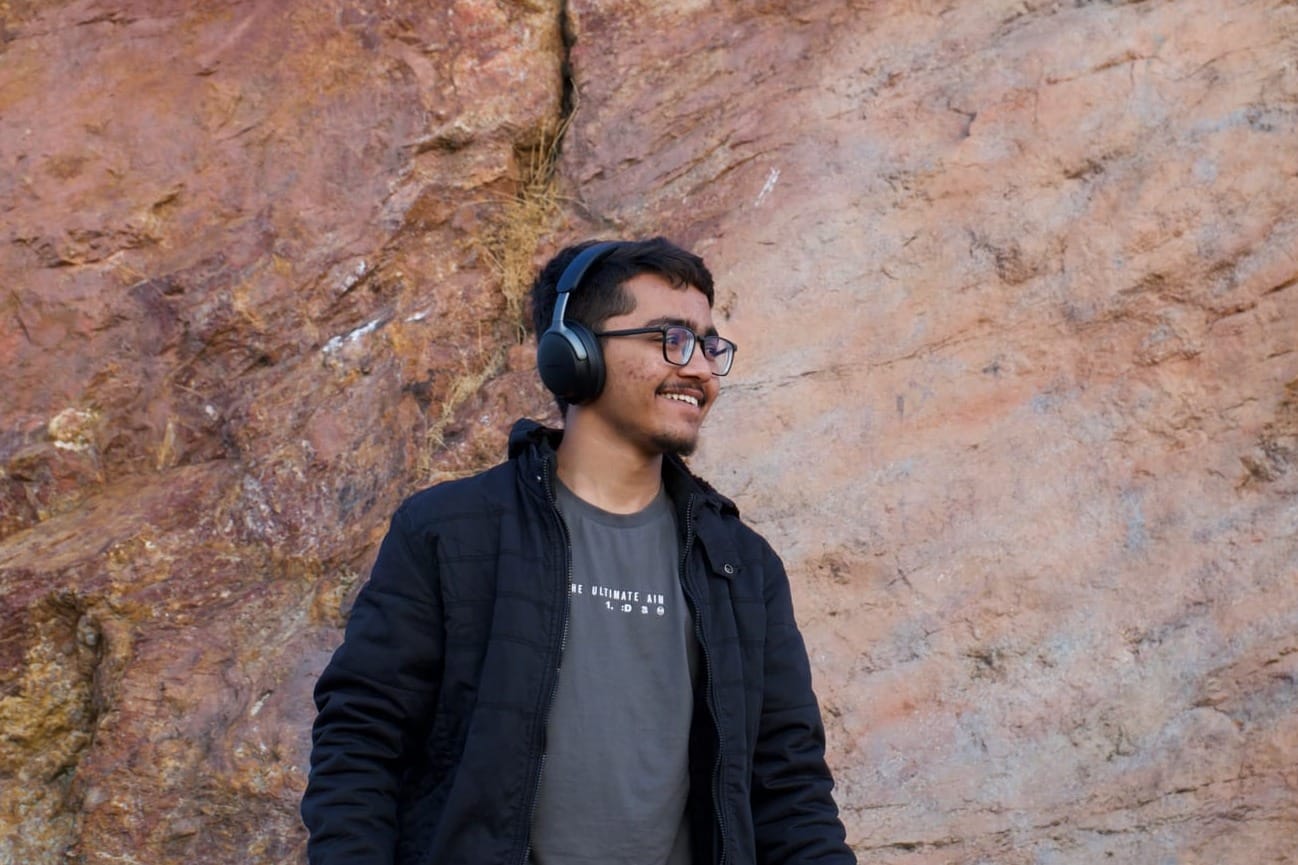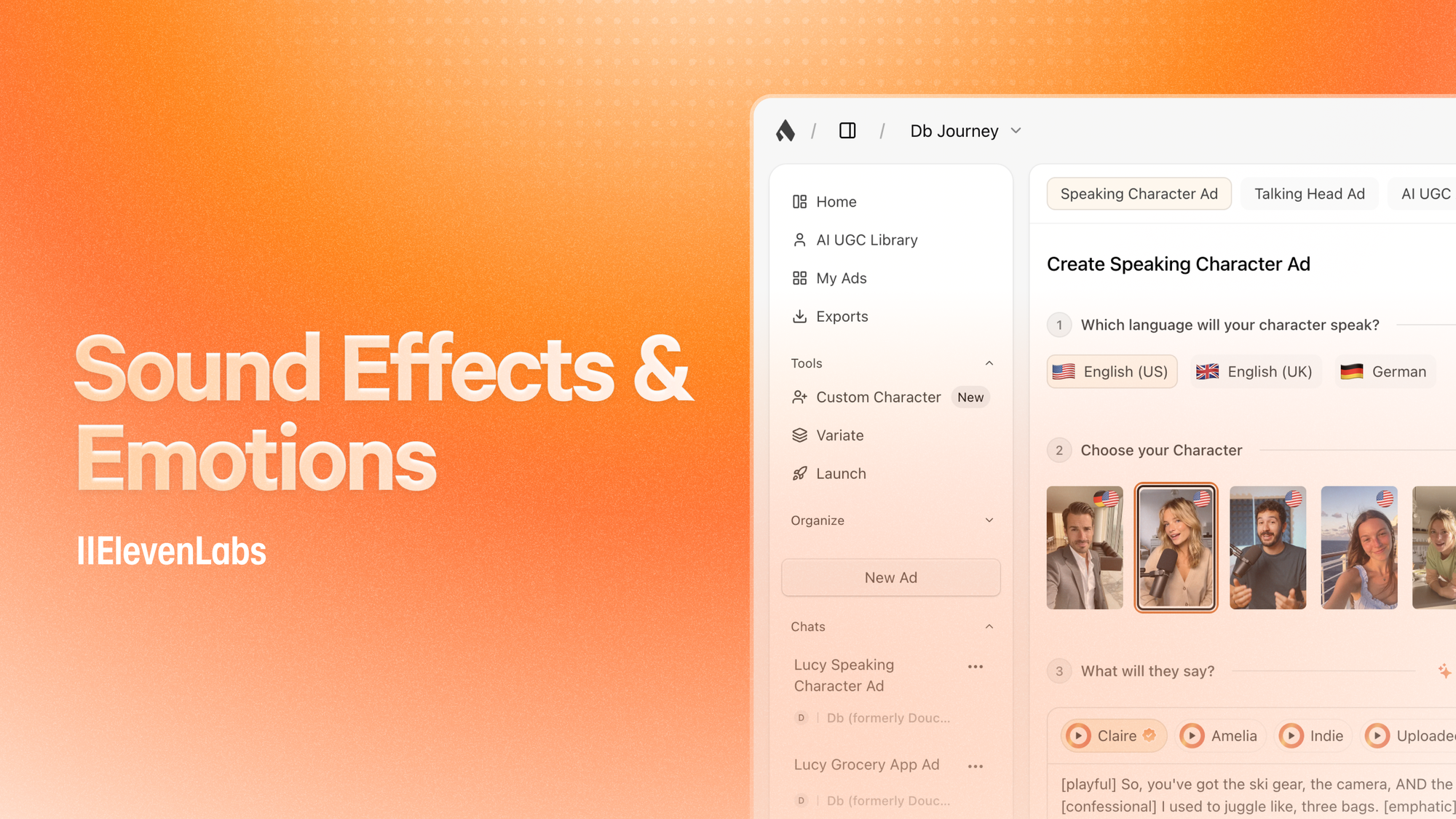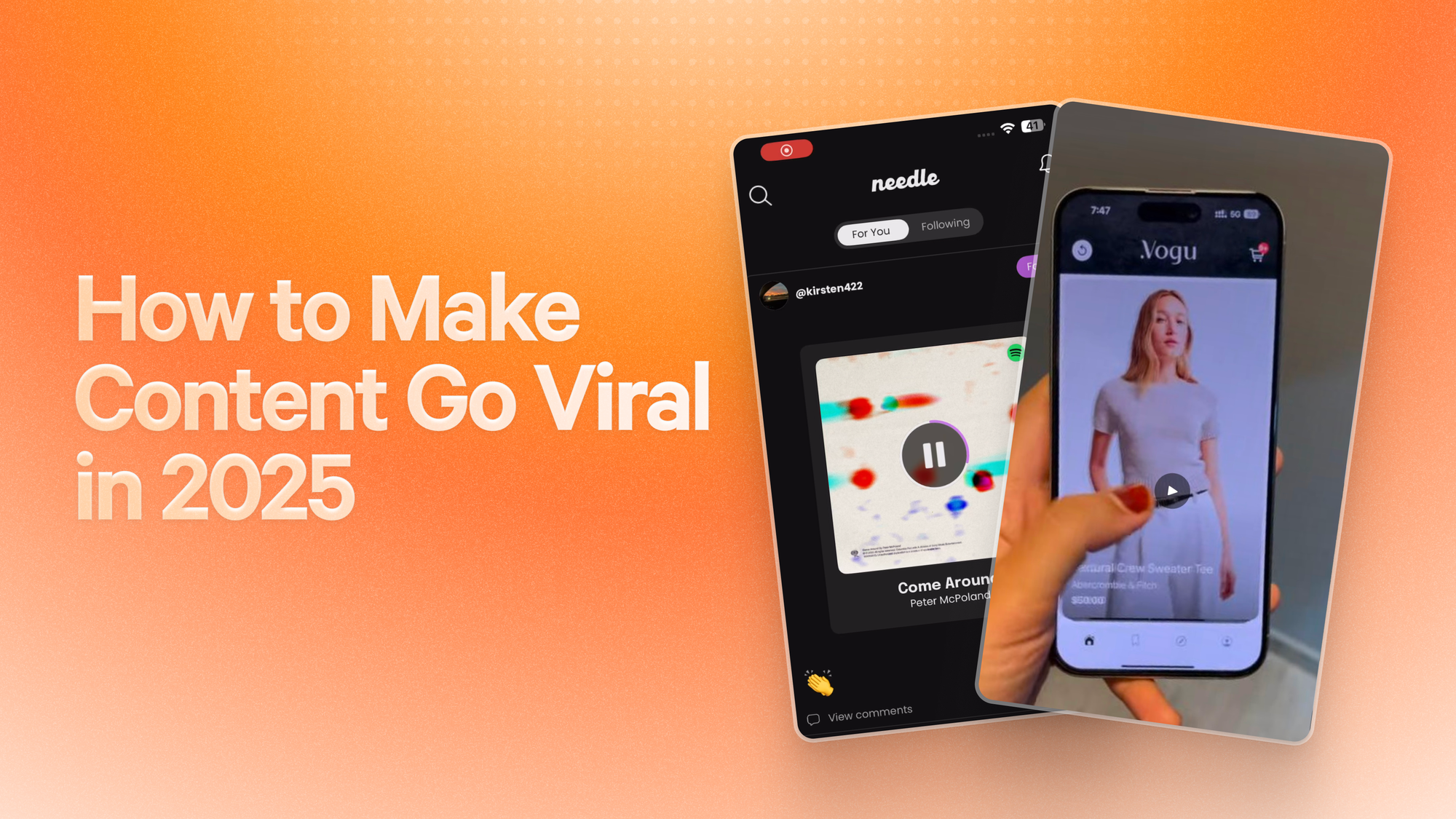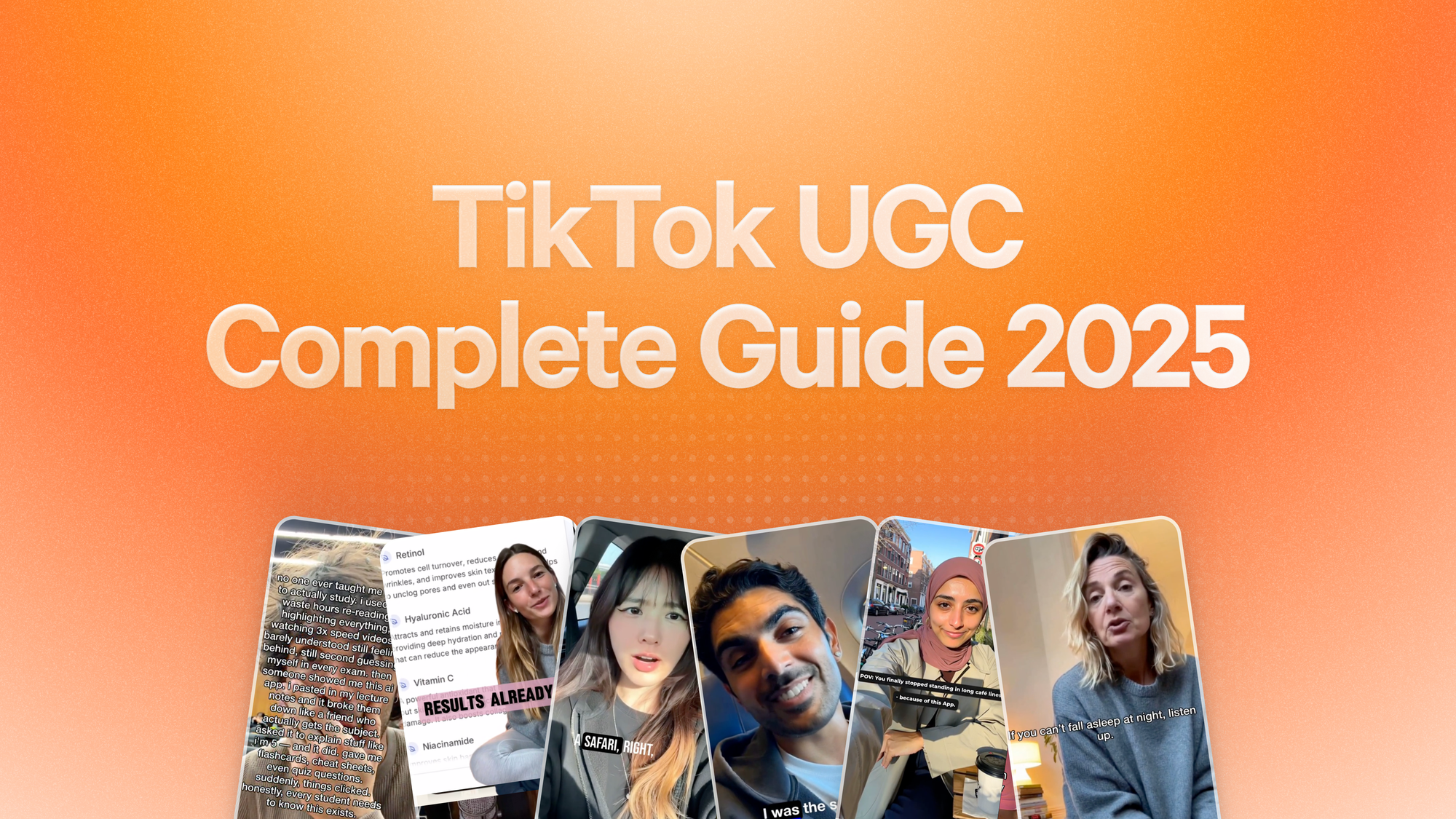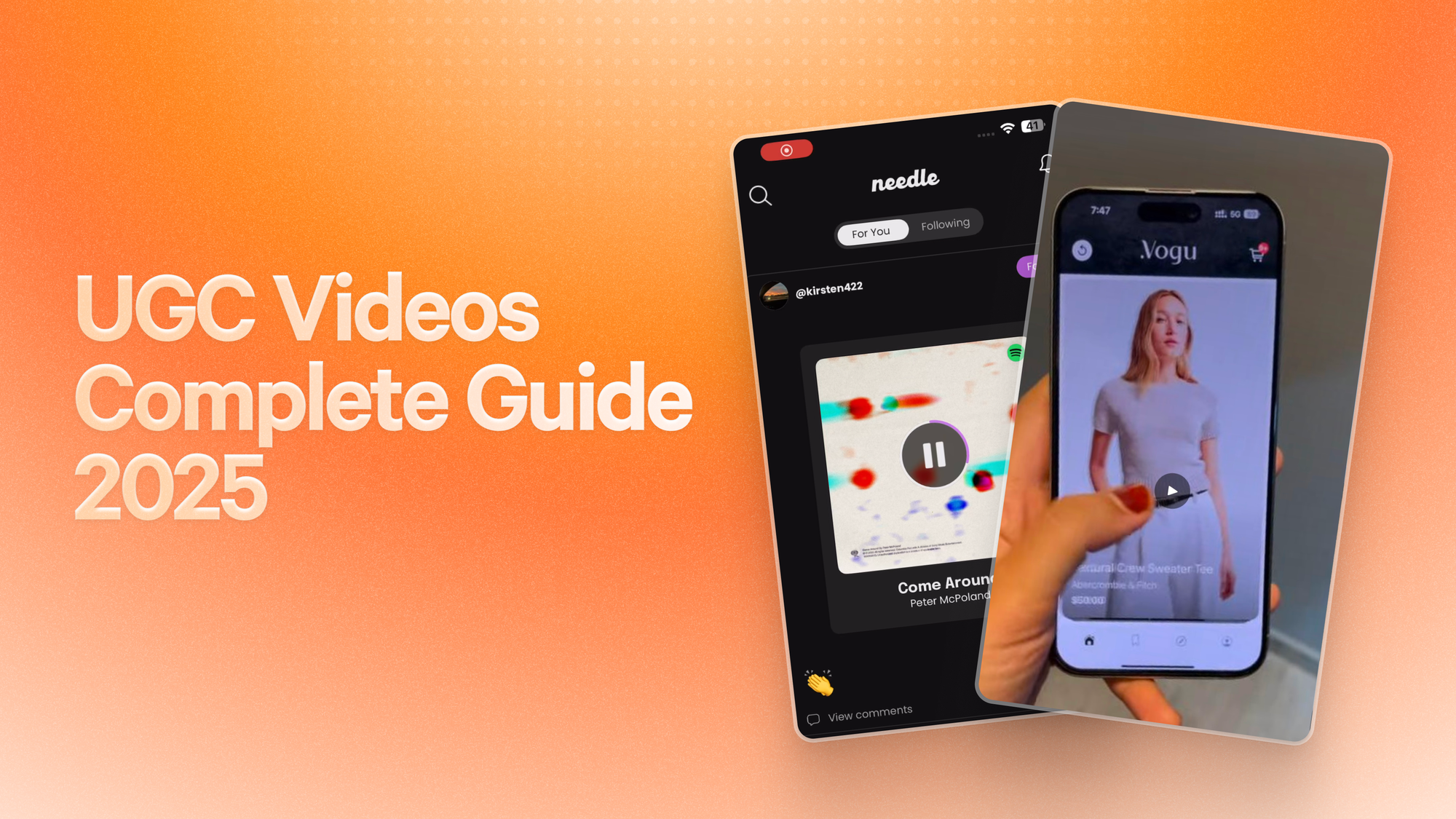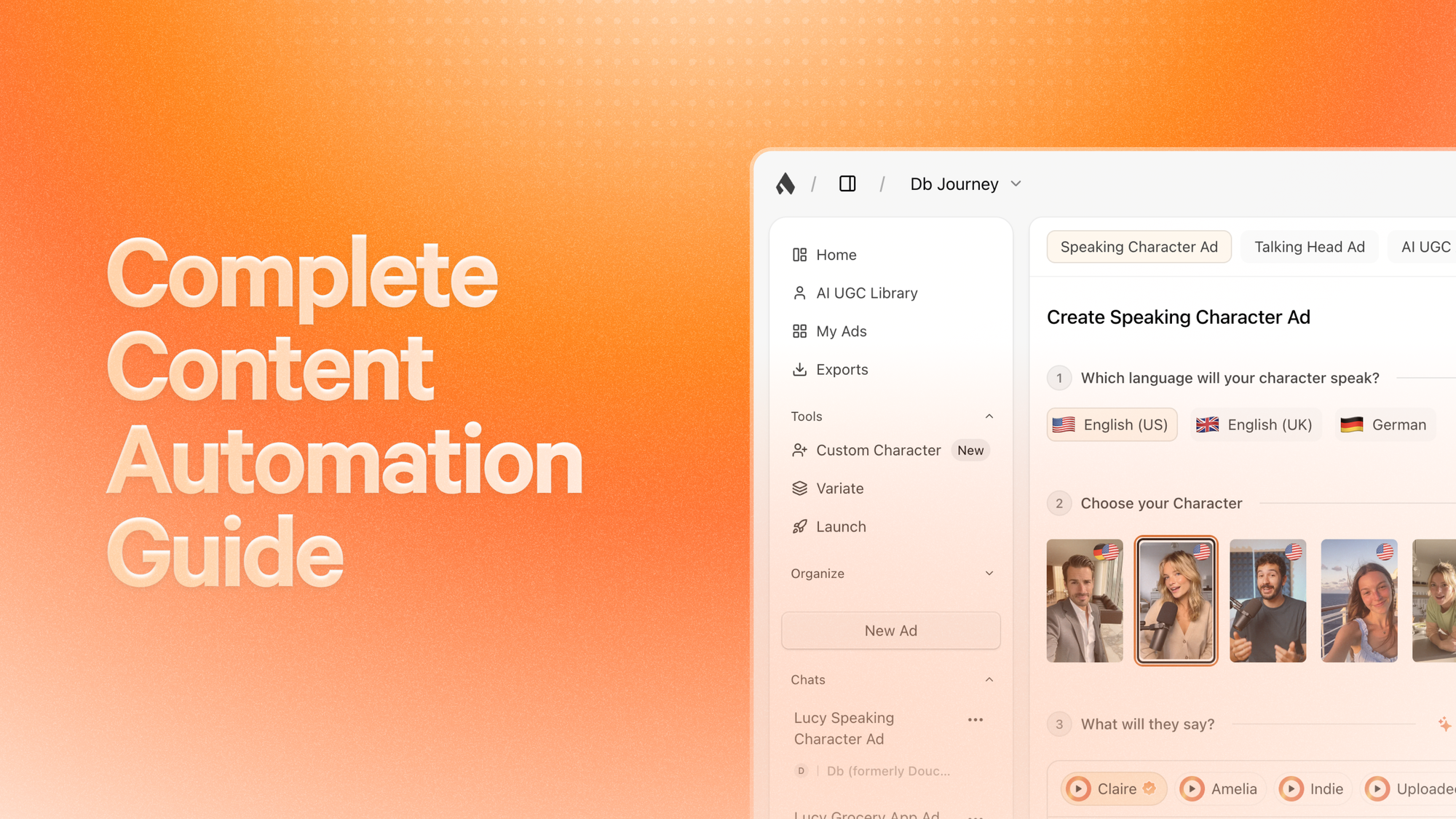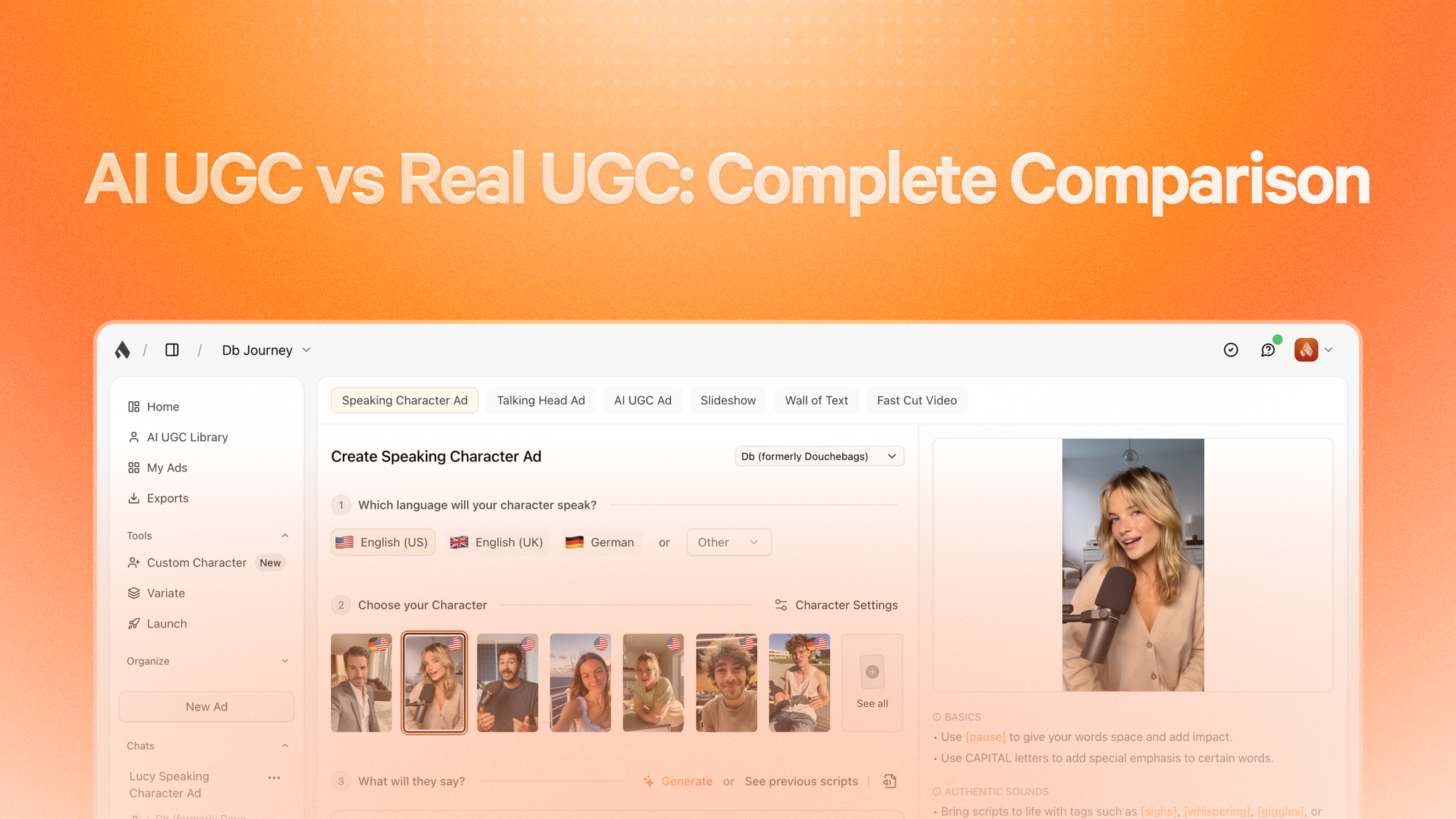Mobile App Advertising That Actually Works in 2025
After analyzing thousands of app campaigns this year, the data reveals something most founders miss: the apps dominating download charts aren't spending more on advertising. They're creating content that people actually want to share.
While competitors burn cash on generic display ads and hope for the best, smart app founders are building audiences through viral content that costs pennies to create and drives downloads for months.
The shift is dramatic. According to eMarketer's 2025 US Mobile Advertising Forecast, mobile advertising spending will reach $228.11 billion in the US in 2025, with in-app advertising accounting for $187.78 billion. Yaguara's 2025 short-form video statistics study found that short-form video content receives 2.5x more engagement than long-form content, making it the preferred format for app promotion. Yet most app marketing strategies still focus on outdated tactics that worked in 2022 but fail in today's attention economy.
The Viral-First Mobile App Advertising Framework
Traditional app advertising follows a simple formula: create ad → pay platform → hope people click. This approach worked when competition was lighter and users were less selective. In 2025, with over 137.8 billion apps and games downloaded in 2024 and mobile user attention spans decreasing, generic ads get scrolled past in milliseconds.
Successful app advertising now follows a different path: create shareable content → earn organic reach → amplify what works with paid promotion. This viral-first approach builds sustainable growth engines instead of expensive acquisition funnels.
Why Viral Content Outperforms Traditional Ads:
The psychology is straightforward. When users discover your app through content they chose to watch, research shows that engagement rates are significantly higher compared to interruption-based advertising. Social platforms reward this engagement with expanded reach, creating compound growth effects that traditional ads cannot match.
The viral content advantage is clear for app marketers. While traditional advertising fights for attention, viral content earns it naturally through genuine audience interest.
The Numbers That Matter:
- Hootsuite's 2025 social media benchmarks show that quality content with high engagement significantly outperforms standard promotional posts
- AppsFlyer research demonstrates that apps can benefit from viral effects that drive organic installs, reducing effective cost per install by up to 61% in certain categories like Health & Fitness
- Yaguara's 2025 video statistics show that 66% of marketers believe short-form content to be the most engaging format
- Apps focusing on viral content strategies typically see higher retention rates due to better user-content alignment
Platform Algorithm Advantages: Every major platform now prioritizes content that generates genuine engagement over content that simply pays for visibility. TikTok's 2025 algorithm research shows their recommendation system evaluates completion rates, shares, and comments within the first hour as critical ranking factors. Meta's 2025 Instagram algorithm updates confirm that saves have become one of the strongest engagement signals, with Instagram Reels getting wider distribution when users save, share, or engage meaningfully. YouTube's algorithm prioritizes watch time and completion rates for Shorts content.
This algorithmic preference for authentic engagement means viral content doesn't just perform better initially – it continues performing better over time as platforms reward successful content with expanded reach.
Platform-Specific Viral Strategies for Mobile Apps
Each platform has distinct viral patterns and user behaviors. Understanding these differences allows app founders to create platform-native content that feels natural rather than promotional.
TikTok: The Viral Content Goldmine
TikTok generates more app downloads than any platform when content hits viral velocity. The key lies in understanding TikTok's unique content ecosystem where education and entertainment merge seamlessly.
Fast-Cut Video Strategy: Fast-cut videos showing rapid app demonstrations perform exceptionally well on TikTok. The format mimics the platform's native quick-transition style while showcasing multiple app features in under 30 seconds. Successful apps use this format to create "satisfying" content where users see quick transformations and immediate results.
Content structure that works:
- Hook (0-3 seconds): Problem statement or surprising claim
- Rapid demonstration (4-20 seconds): Quick feature showcase with fast transitions
- Result/payoff (21-30 seconds): Clear outcome or call-to-action
Trending Audio Integration: TikTok algorithm research shows apps that align their content with trending audio see significantly higher reach than those using original sound. The strategy involves monitoring trending audio clips and creating app demonstrations that naturally sync with popular sounds, dance trends, or viral audio hooks.
Smart app founders track trending sounds daily and adapt their content creation pipeline accordingly. This approach turns algorithm preferences into competitive advantages.
Educational Angle Approach: TikTok users frequently search for "how to" content, making educational app demos highly shareable. Apps in productivity, fitness, finance, and lifestyle categories perform exceptionally well when content teaches users something valuable while demonstrating app functionality.
Performance benchmarks for TikTok app content based on current algorithm research:
- Target completion rate: 65%+ (higher completion rates get priority)
- Share rate: 8%+ (indicates viral potential)
- Comment engagement: 15%+ (builds community around app)
- First-hour performance is critical for algorithm success
Instagram: Visual Storytelling That Converts
Instagram's dual-content approach (feed posts and Reels) allows apps to build both authority and viral reach simultaneously. The platform rewards visually compelling content that tells complete stories within short timeframes.
Slideshow Content Mastery: Later's Instagram Strategy Guide 2025 confirms Instagram slideshows consistently outperform single-image posts for app promotion, generating 73% more saves and 45% more shares. Hootsuite's Instagram Algorithm Guide shows effective app slideshows follow story-driven formats that build curiosity and provide value across multiple slides.
The slideshow format works particularly well for app tutorials and feature demonstrations. Breaking complex app functionality into digestible slides increases user comprehension and engagement.
Winning slideshow structures:
- Slide 1: Hook/problem statement with compelling visual
- Slides 2-4: Step-by-step solution demonstration using app screenshots
- Slide 5-7: Results/benefits with social proof elements
- Slide 8: Clear call-to-action with app download information
Instagram Reels Optimization: Reels require different optimization than TikTok despite similar format. Instagram users prefer slightly more polished content with clear value propositions. Successful app Reels focus on transformation stories, before/after demonstrations, and lifestyle integration.
Key Instagram Reels strategies based on Sprout Social's Instagram Reels Guide 2025:
- Use trending hashtags within first 3 hours of posting
- Include text overlay for muted viewing (Verizon Media Mobile Video Study shows 92% of users watch without sound)
- Create content that performs well in both feed and Explore sections
- Optimize for saves (Meta's 2025 algorithm updates confirm saves are among Instagram's strongest engagement signals)
Stories and Highlights Strategy: Buffer's State of Social Media 2025 shows Instagram Stories provide testing ground for content ideas while Highlights create permanent showcases of app benefits. Socialinsider's Instagram Stories Analysis 2025 reveal apps using Stories strategically see 34% higher profile visits and 28% more website clicks.
Effective Stories content includes:
- Behind-the-scenes app development updates
- User-generated content featuring app success stories
- Quick tutorials and feature spotlights
- Interactive elements (polls, questions, quizzes) that build community
YouTube Shorts: Long-Term Discovery Engine
YouTube Shorts function differently from TikTok and Instagram Reels due to YouTube's search-focused algorithm. Content optimized for discovery performs better than trend-based content, making YouTube Shorts ideal for educational app content with lasting value.
Educational Content Strategy: Think with Google Consumer Insights 2025 shows YouTube users search for solutions to specific problems, making problem-solving app content highly effective. YouTube Creator Economy Report 2025 confirms apps that create "how to solve [specific problem] with [app name]" content often achieve sustained visibility in YouTube search results.
YouTube's search-first approach makes it ideal for evergreen app content. Unlike trending platforms, YouTube rewards content that answers specific user questions consistently over time.
Successful YouTube Shorts formats:
- Problem identification and solution presentation (15-20 seconds)
- Step-by-step app tutorial content (20-45 seconds)
- Results showcase with specific metrics (45-60 seconds)
Search Optimization Tactics: Unlike other platforms, YouTube Shorts benefit from traditional SEO optimization. VidIQ's YouTube Growth Report 2025 shows apps that optimize titles, descriptions, and tags for search queries see 156% higher long-term view counts.
YouTube Shorts optimization includes:
- Titles that match actual search queries
- Descriptions with relevant keywords and app benefits
- Custom thumbnails that stand out in search results
- Consistent posting schedule that builds subscriber base
AI-Powered Content Creation for Scale
Creating viral content consistently requires volume testing that traditional video production cannot support economically. The apps achieving consistent viral success use AI-powered creation tools to test dozens of content variations and scale winning approaches. AI-powered platforms like Superscale.ai enable users to create multiple high-quality video variations rapidly.
Volume testing is the secret weapon of viral app marketing. Most successful apps test 15-30 content pieces to find 1-2 viral winners.
The Volume Advantage: Socialbakers Content Performance Report 2025 confirms viral content success rates remain low even with optimization – typically 3-7% of content achieves significant viral reach. This reality means apps need to create 15-30 pieces of content to find 1-2 viral winners. Traditional video production makes this volume economically impossible, while AI-powered tools enable rapid testing and iteration.
AI Content Creation Benefits: Modern AI platforms generate authentic-looking content that can perform similarly to human-created content. The technology enables apps to:
- Test 20+ content variations weekly instead of 2-3 monthly
- Iterate on viral winners immediately when trends emerge
- Create platform-specific versions of successful content instantly
- Maintain consistent content quality across all variations
AI democratizes high-volume content creation for apps of all sizes. Small teams can now compete with enterprise budgets through intelligent automation.
Content Format Advantages: AI platforms excel at creating the exact content formats that drive viral success on each platform:
Fast-Cut Videos: AI systems create rapid transition content showing app features with perfect timing for platform algorithms. The technology ensures each cut maintains viewer attention while building toward clear payoffs.
Slideshow Content: AI generates visually compelling slideshow sequences with consistent design systems and compelling narrative flows. Each slide builds anticipation while providing genuine value to viewers.
Educational Content: AI creates tutorial-style content that teaches valuable skills while naturally incorporating app demonstrations. The content feels helpful rather than promotional.
Scaling Successful Patterns: When content achieves viral success, AI platforms enable immediate scaling through variations that maintain core viral elements while testing different hooks, audiences, and calls-to-action. This approach maximizes the value extracted from each viral success.
Cost Efficiency at Scale: Traditional content creation can cost $200-800 per video, making extensive testing financially prohibitive. AI-powered creation platforms like Superscale.ai offer cost-effective alternatives, enabling apps to test multiple variations economically.
Amplification Strategies: Turning Viral Organic Into Paid Success
Organic viral content provides the foundation, but strategic paid amplification multiplies results exponentially. The most successful apps use organic performance data to guide paid advertising decisions rather than guessing which content will perform.
The Amplification Framework: Monitor organic content performance for 48-72 hours, identify top performers based on engagement metrics, then amplify successful content with targeted paid promotion. This approach ensures advertising budget focuses on content proven to resonate with audiences.
Platform-Specific Amplification:
TikTok Ads Amplification: TikTok for Business 2025 confirms their advertising platform allows promotion of organic content that's already showing viral potential. Sensor Tower App Marketing Report 2025 show apps that amplify content with completion rates above 60% typically see 3-5x higher conversion rates than ads created specifically for paid promotion.
The amplification strategy transforms organic winners into paid success stories. This approach eliminates guesswork from ad creative decisions.
Effective TikTok amplification strategy:
- Promote content within 24 hours of viral indicators appearing
- Target broader audiences initially, then narrow based on performance data
- Use Spark Ads to maintain organic feel while adding paid reach
- Monitor performance hourly during first 48 hours of paid promotion
Instagram Ads Integration: Meta Business Help Center 2025 shows Instagram allows seamless promotion of both feed posts and Reels that demonstrate organic success. Facebook IQ research confirms the platform's detailed targeting options enable precise audience expansion based on organic engagement patterns.
Instagram amplification tactics:
- Promote Reels that achieve above-average save rates (indicates strong resonance)
- Create lookalike audiences based on organic engagement data
- Use multiple ad placements to maximize reach across Instagram's ecosystem
- A/B test different call-to-action approaches while maintaining successful creative
YouTube Shorts Promotion: Google Ads Help 2025 explains how YouTube's advertising platform enables promotion of Shorts content to users actively searching for related solutions. Think with Google studies confirm this search-intent advantage makes YouTube Shorts advertising particularly effective for apps solving specific user problems.
YouTube amplification approach:
- Target keywords related to problems your app solves
- Promote content to users who've watched similar educational content
- Create campaign sequences that lead viewers from Shorts to longer-form content
- Use YouTube's conversion tracking to optimize for app installs rather than views
Cross-Platform Amplification: Later's Cross-Platform Marketing Guide 2025 shows the most sophisticated apps repurpose viral content across multiple platforms with platform-specific modifications. Hootsuite's Algorithm Analysis 2025 reveals content that goes viral on TikTok often performs well on Instagram Reels with minor adjustments for each platform's algorithm preferences.
Cross-platform content repurposing multiplies ROI from every viral hit. Smart apps create once, then adapt for maximum reach across all channels.
Performance Tracking and Optimization
Measuring viral content success requires different metrics than traditional advertising. While traditional ads focus on cost-per-click and conversion rates, Sprout Social's 2025 Social ROI Report shows viral content success indicators include engagement depth, sharing velocity, and sustained performance over time.
Key Performance Indicators:
Engagement Depth Metrics based on Socialinsider's 2025 Benchmarks:
- Average watch time percentage (target: 65%+ for short-form content)
- Save rate (indicates content provides lasting value)
- Share rate (measures viral potential)
- Comment engagement quality (builds community around app)
Viral Velocity Indicators:
- First 6-hour performance benchmarks
- Share-to-view ratio progression
- Cross-platform mention increases
- User-generated content inspired by original content
Conversion Quality Metrics:
- User quality scores for organically acquired users
- 30-day retention rates for viral traffic
- Lifetime value comparison between viral and paid users
- In-app engagement patterns for different traffic sources
Attribution Challenges and Solutions: Viral content often generates downloads through indirect paths that traditional attribution cannot track. Users might see content on TikTok, discuss with friends, then download days later after seeing related content on Instagram.
Advanced attribution strategies include:
- Cross-platform user journey mapping
- Brand search volume monitoring following viral content
- Survey-based attribution for understanding user motivation
- Cohort analysis comparing users acquired during viral periods
Optimization Based on Data: Successful apps continuously optimize content based on performance data rather than assumptions. This includes analyzing which hooks generate highest completion rates, which visual styles drive most saves, and which calls-to-action convert most effectively.
Regular optimization activities:
- Weekly performance review of all published content
- A/B testing of successful content elements across new content
- Platform algorithm update monitoring and strategy adjustments
- Competitor viral content analysis and strategic adaptation
2025 Trends and Future-Proofing Your Strategy
The mobile app advertising landscape continues evolving rapidly, with new platforms, technologies, and user behaviors emerging constantly. Apps that build adaptable viral content systems rather than platform-dependent strategies maintain competitive advantages regardless of changes.
Emerging Platform Opportunities: New platforms consistently emerge offering early-adopter advantages for apps willing to experiment. BeReal's rapid growth created temporary opportunities for authentic app demonstrations. Similar opportunities will emerge as new platforms gain user traction.
AI Integration Advancement: AI content creation technology continues improving, with emerging capabilities including:
- Real-time trend adaptation for content optimization
- Predictive analytics for viral potential scoring
- Automated A/B testing across multiple content variations
- Cross-platform optimization based on algorithm updates
Privacy and Attribution Evolution: iOS privacy updates and similar Android changes require apps to build first-party data collection and attribution systems. Viral content strategies provide advantages here because they build direct relationships with users who choose to engage rather than being targeted through third-party data.
Video Format Evolution: Longer-form content is gaining traction across platforms traditionally focused on short-form content. Apps that build content systems capable of creating both short-form viral content and longer educational content will capture more comprehensive user attention.
Community Building Integration: The most successful apps now use viral content as entry points into broader community experiences. Discord servers, exclusive app features, and user-generated content campaigns extend viral moments into sustained engagement.
Future-Proofing Strategies:
- Build content creation systems rather than individual viral hits
- Develop cross-platform content repurposing capabilities
- Invest in owned media properties (email lists, push notification audiences)
- Create user-generated content programs that amplify organic reach
- Maintain flexibility to adapt to new platforms and algorithm changes
Frequently Asked Questions
What's the minimum budget needed for viral app advertising in 2025?
You can start viral app advertising with as little as $100-200 monthly. The key is focusing budget on amplifying organically successful content rather than creating expensive original content. Platforms like Superscale.ai enable apps to create 20-30 test videos for under $50, identify viral winners organically, then amplify successful content with paid promotion.
Most successful apps start small and scale what works. Begin with organic testing, identify your viral patterns, then invest marketing budget in amplifying proven content.
How long does it take to see results from viral content strategies?
Viral content results typically appear within 48-72 hours if content resonates with audiences. However, building sustainable viral content systems requires 4-8 weeks of consistent testing and optimization. Plan for 3-6 months to develop reliable viral content creation and amplification processes.
Which platforms should new apps prioritize for viral content?
Start with TikTok and Instagram Reels due to their algorithm advantages for new content creators. These platforms provide the best opportunities for unknown apps to achieve significant reach without existing audiences. Add YouTube Shorts once you've established successful content patterns on primary platforms.
How many viral videos do successful apps create monthly?
Top-performing apps publish 15-25 pieces of viral content monthly across all platforms. This volume requires AI-powered creation tools rather than traditional video production. Focus on testing 3-5 new content approaches weekly while scaling successful patterns.
Consistency beats perfection in viral content creation. Apps that publish regularly with good content outperform those that post sporadically with perfect content.
Can viral content work for B2B or enterprise apps?
Yes, but the approach differs from consumer apps. B2B viral content focuses on educational value and problem-solving rather than entertainment. LinkedIn becomes a crucial platform alongside TikTok and Instagram. Professional pain points and productivity improvements drive B2B viral success.
What's the biggest mistake apps make with viral content strategies?
The most common mistake is creating individual viral hits rather than building systematic viral content processes. Apps that achieve sustained success focus on understanding what makes content shareable, then create systems for consistently producing similar content rather than hoping for lightning-in-a-bottle moments.
Building systems scales success beyond individual viral moments. The apps dominating 2025 treat viral content creation as a repeatable process, not random chance.
How do you measure ROI from viral content campaigns?
Track both direct and indirect conversion metrics. Direct conversions include app downloads attributed to specific content pieces. Indirect conversions include brand search increases, social media following growth, and user-generated content creation. Use cohort analysis to compare user quality between viral and traditional advertising sources.
Should apps still invest in traditional paid advertising alongside viral strategies?
Yes, but the approach changes significantly. Use viral content to identify what resonates with your audience, then create traditional ads based on proven viral patterns. This approach improves traditional ad performance while reducing creative production costs.
The most effective 2025 app advertising strategies combine viral content insights with traditional ad targeting. Organic content reveals what works, paid ads scale those insights to specific audiences.
Ready to Build Your Viral App Advertising Strategy?
The apps winning in 2025 aren't spending more on advertising – they're creating content that people actually want to share. While competitors waste budgets on generic ads that get scrolled past, smart founders are building viral content systems that drive sustainable growth.
The shift to viral-first app advertising is accelerating. Apps that build these capabilities now will establish significant competitive advantages before the market catches up.
The opportunity window is still open, but it's closing rapidly as more apps discover these strategies. Early adopters who build viral content capabilities now will dominate their categories while competitors struggle with traditional advertising approaches.
Your next steps:
- Start creating viral content variations using AI tools like Superscale.ai
- Test across platforms to identify your highest-performing content formats
- Amplify winners with targeted paid promotion based on organic performance data
- Build systems for consistent viral content creation and optimization
The apps that embrace viral-first advertising strategies today will own their markets tomorrow while competitors wonder why their expensive ads aren't working.
Most successful apps start by creating their first batch of test content. Superscale.ai's platform enables founders to generate multiple viral-ready video variations in minutes, then identify which formats resonate with their audience before investing in paid amplification.

